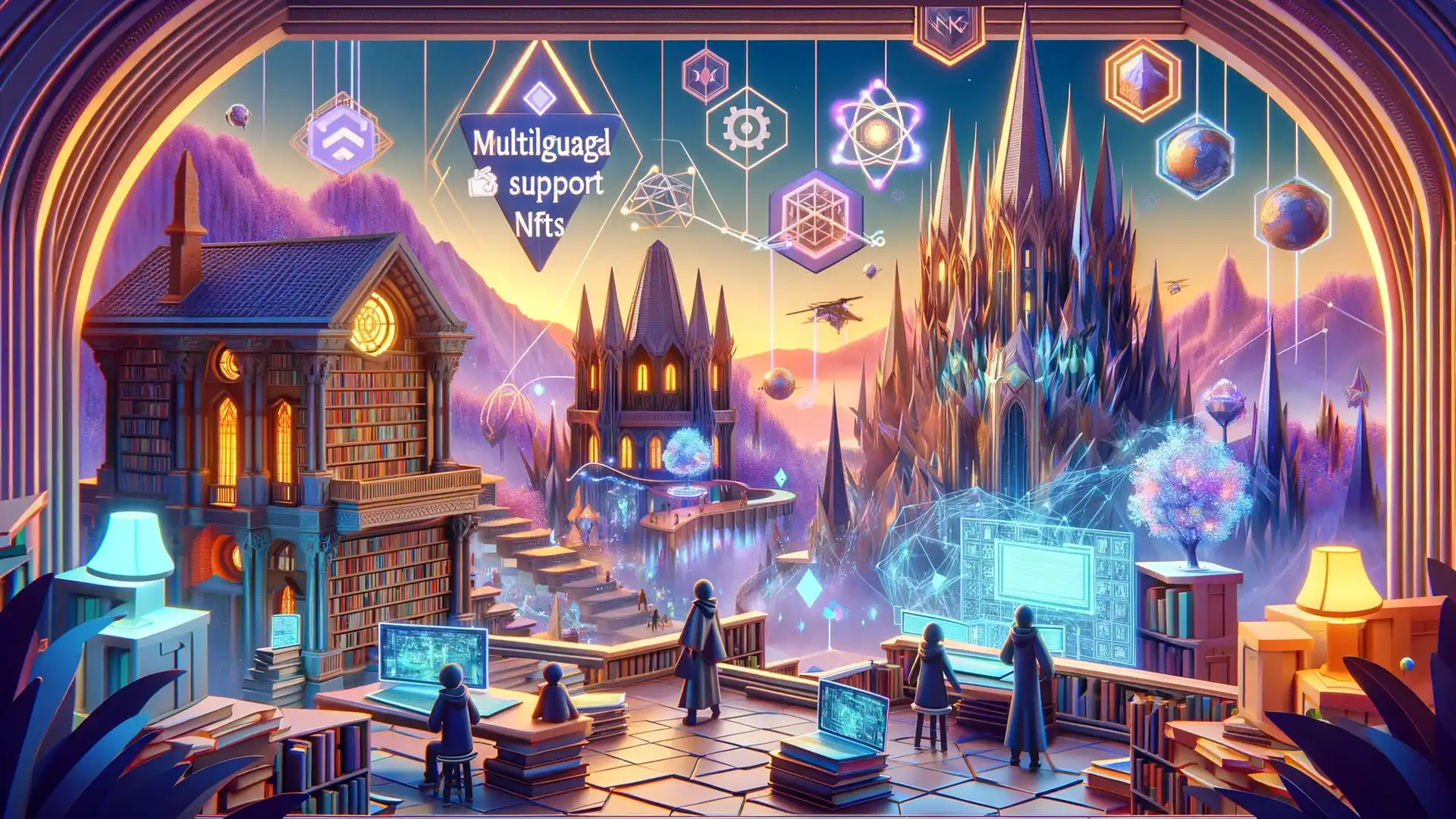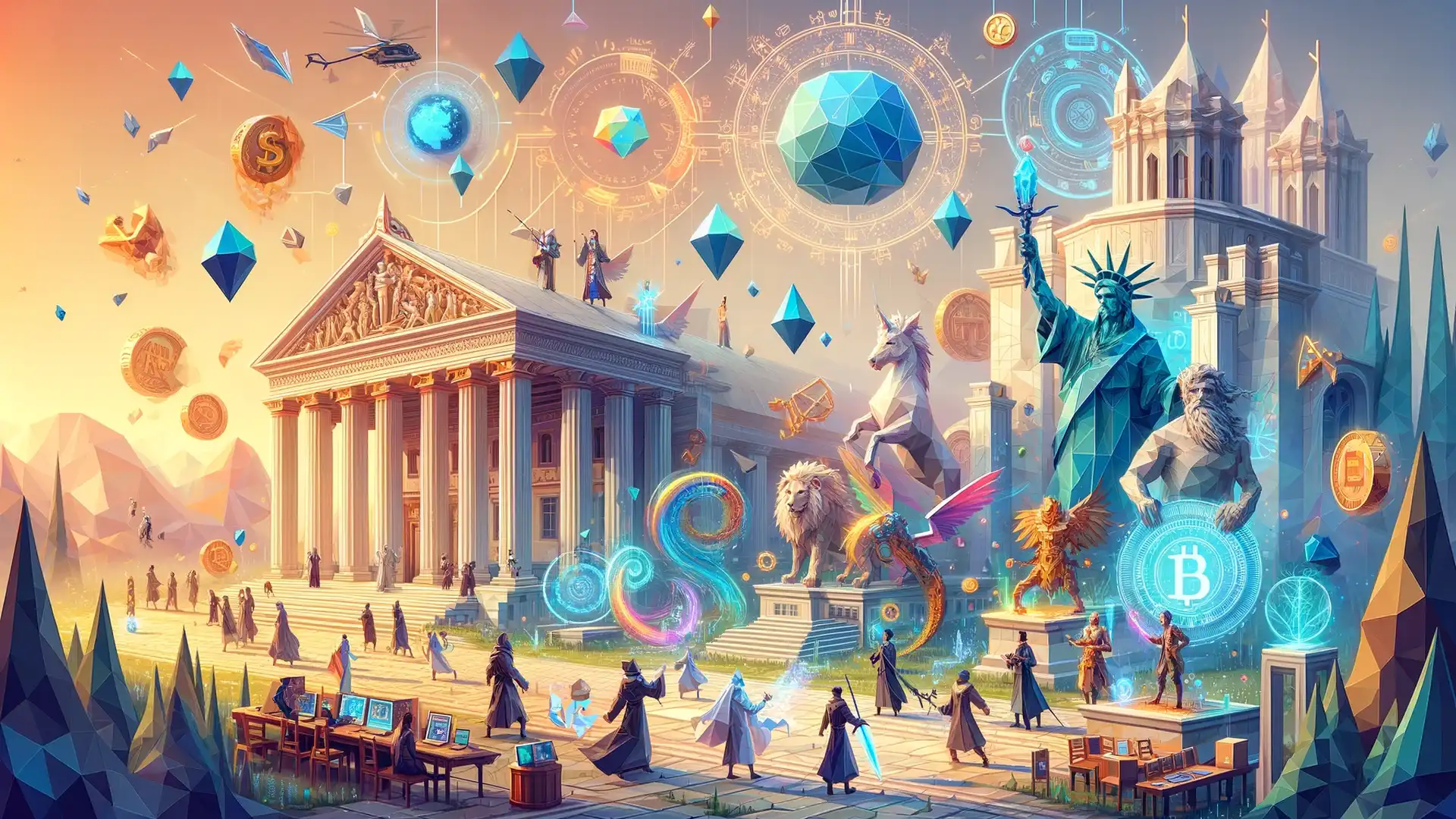Multilingual Support and Cultural Adaptation of NFT Credentials

 Author:
Artem Grigoriev
Author:
Artem Grigoriev
Multilingual and Cultural Adaptation in NFT Credentials: Enhancing Global Accessibility
Imagine navigating the world with a universally understood passport . That’s the promise of multilingual and culturally adapted NFT credentials. These unique digital certificates prove ownership and authenticity.
📘 This article complements: "The Complete Guide to NFT Credentials". Explore it to find answers to all your questions;)
As we advance into a digital era, NFT credentials gain traction in educational and professional sectors. Ensuring these digital badges speak the language of their users is paramount. Picture a student in Brazil or a professional in Japan. They can present their credentials seamlessly without language barriers complicating the process. This vision aligns with the global push towards inclusive digital ecosystems. The UNESCO Global Education Monitoring Report emphasizes the importance of multilingual education in fostering inclusive and equitable learning opportunities.
Language barriers can severely limit the accessibility of credentials. They lock opportunities behind linguistic walls. By integrating multilingual support (support for many languages) , we can democratize access to credentials. This ensures they are as valuable in Buenos Aires as they are in Berlin.
According to a report by the European Commission , multilingual education enhances cognitive abilities. It improves brain functions and increases opportunities for personal and professional growth.
Professional translation services (services by experts in translating languages) play a crucial role here. They ensure that the nuance (subtle details) and accuracy of the original credential are preserved across languages. These services, paired with automated translation tools (software that translates automatically) , offer dynamic translation capabilities. They can keep up with the fast-paced changes in the digital landscape.
Localized user interfaces (interfaces adapted to local languages and cultures) are another key aspect. They provide an intuitive and culturally relevant experience that speaks to the user’s background and expectations. A study by Common Sense Advisory found that 75% of consumers are more likely to purchase products if the information is presented in their native language. This underscores the importance of localization.
Consider the success of platforms like Duolingo and Coursera . They have effectively navigated the complexities of multilingual support. They offer excellent case studies in how organizations can overcome these challenges. They leverage both human and machine translation to cater to a global audience. Duolingo's success is detailed in a Harvard Business School case study . It demonstrates the effective combination of language learning and technology.
But language is just the beginning. Cultural adaptation (adjusting content to fit cultural norms) takes it a step further. This ensures that the content is not just understood but truly resonates with users. This involves adapting everything from visual design elements (visual aspects like colors and layouts) to the overall user experience (how users interact with the interface) . This reflects the cultural norms and values of diverse user groups.
💡 Note: Cultural adaptation requires a balance between standardization (making things uniform) for consistency and localization (adapting to local culture) for relatability. It’s about creating a user experience that feels tailored yet universally consistent.

The Nielsen Norman Group highlights that culturally adapted interfaces significantly improve user engagement and satisfaction.
Technological tools are at the forefront of this effort. Content Management Systems (CMS) (software to manage digital content) that support multiple languages and cultural contexts are essential. Machine learning algorithms (AI systems that learn and predict) that predict and adapt to user preferences also play a crucial role. These tools help overcome technical challenges. They ensure NFT credentials are accessible and relevant.
The Gartner Research emphasizes the transformative potential of machine learning in personalizing user experiences on a global scale.
Community feedback is another cornerstone of successful cultural adaptation. Engaging with users from diverse backgrounds through surveys, focus groups, and beta testing helps gather invaluable insights. This feedback loop allows organizations to refine their approach. It ensures their credentials meet the needs and expectations of a global audience.
According to a report by McKinsey & Company , companies that actively seek and incorporate user feedback can significantly enhance customer satisfaction and loyalty.
Additionally, partnerships with local organizations can provide deeper insights into cultural nuances and user preferences. This ensures that the adaptation process is thorough and effective. Collaborating with educational and professional bodies in various regions can also facilitate the validation and acceptance of these credentials. This adds a layer of credibility and trust.
By understanding and implementing these strategies, we can ensure that NFT credentials not only reach a broader audience. They also provide a meaningful and engaging experience for every user, regardless of their linguistic or cultural background.
💡 Tip: Regularly updating your multilingual and culturally adapted content based on user feedback and technological advancements is crucial. This helps maintain relevance and effectiveness in a dynamic global landscape. Integrating continuous learning and adaptation into your strategy will help you stay ahead of the curve. It meets the evolving needs of a diverse user base.

Strategies and Best Practices for Multilingual and Culturally Adapted NFT Credentials
Creating NFT credentials (digital certificates) that speak the language of every user requires a blend of technical expertise and cultural sensitivity. The journey begins with tackling the technical challenges of multilingual support.
Managing data in multiple languages, ensuring accurate translations, and maintaining consistency are hurdles that need to be overcome. Advanced translation management systems streamline this process. They offer sophisticated tools to organize and oversee translations efficiently. These systems manage large volumes of text in different languages, ensuring nothing is lost in translation.
Leveraging neural machine translation (NMT) technology further enhances accuracy. It offers translations that grasp context and nuance effectively. A study from Gartner forecasts that by 2024, 85% of enterprise translation will be handled by NMT. This highlights its growing importance and efficiency.
Localization testing is another critical step. It involves verifying translations within their intended context to ensure they make sense and resonate with the target audience. It’s about more than just words; it's about conveying the right message accurately. For instance, a phrase might have a different meaning or connotation in another culture.
According to CSA Research , companies that invest in localization testing report a 1.5 times higher return on investment from their global campaigns. This demonstrates the financial and engagement benefits of thorough localization.
Effective cultural adaptation strategies go beyond language. They involve customizing content and messaging to reflect local idioms and expressions accurately. Adapting visual elements (pictures and graphics) —such as colors, symbols, and design choices—ensures the content aligns with cultural norms and aesthetic preferences. For example, the color red symbolizes luck in some cultures and caution in others. Understanding these nuances can significantly enhance user engagement and acceptance.
Research by the Hasso-Plattner Institute emphasizes the impact of culturally adaptive design on user satisfaction and engagement.
A crucial component of cultural adaptation is the incorporation of regional payment methods . Offering localized payment options facilitates smoother transactions and builds trust with users. This involves using local currencies, integrating with popular regional payment gateways, and ensuring compliance with local financial regulations. According to a report by Worldpay , 77% of consumers abandon online purchases if their preferred payment method is not available. This underscores the importance of regional payment options for enhancing user experience and trust.
Real-world examples provide valuable insights. Consider platforms like Coursera and Duolingo . They have successfully implemented multilingual support and cultural adaptation, allowing them to reach diverse audiences worldwide. Their approaches offer models for future projects.
💡 Note: Cultural adaptation is not a one-time effort but a continuous process. Regular updates and feedback integration are essential to keep the content relevant and effective. This ensures ongoing engagement.

A Harvard Business Review article details how Coursera’s commitment to cultural adaptation has been instrumental in its global expansion. This showcases effective strategies for reaching international users.
Legal and ethical considerations are paramount. Ensuring compliance with regional regulations on data privacy and intellectual property is essential. Understanding local laws and standards helps avoid legal pitfalls. Ethical considerations involve creating fair and unbiased credential content, respecting cultural differences, and ensuring inclusivity.
The International Association of Privacy Professionals (IAPP) provides comprehensive guidelines on navigating global data privacy regulations. This offers crucial insights for maintaining compliance and ethical standards.
Cultural sensitivity training (training to understand and respect different cultures) for developers is another best practice. This training equips teams with the knowledge and skills to create content that is culturally appropriate and respectful. For example, understanding cultural taboos can prevent inadvertent offenses in content.
Incorporating accessibility features ensures that NFT credentials are usable by individuals with disabilities. Features like text-to-speech, adjustable text sizes, and high-contrast interfaces make credentials more accessible. The World Wide Web Consortium (W3C) offers extensive resources and guidelines on implementing web accessibility standards. This helps developers create inclusive digital credentials.
Continuous feedback and improvement are vital. Collecting user feedback through surveys, user testing sessions, and community forums helps developers understand user needs and preferences better. Establishing a feedback loop where insights are regularly reviewed and integrated into updates ensures the ongoing relevance and effectiveness of NFT credentials.
A report by McKinsey & Company highlights the importance of agile feedback mechanisms (fast and flexible ways of getting user input). This emphasizes the need for responsive and iterative improvement.
Furthermore, building partnerships with local organizations and experts can enhance the cultural relevance of NFT credentials. Collaborating with educational institutions, professional bodies, and cultural consultants can provide deeper insights into regional preferences and practices. This leads to more effective localization and adaptation efforts. These partnerships can also facilitate the validation and recognition of NFT credentials in different regions, adding credibility and trust.
Staying ahead of future trends is crucial for developers. Emerging technologies like AI-driven localization and blockchain enhancements can further improve the security and verifiability of multilingual credentials. By continuously refining their strategies and adopting new technologies, developers can ensure their NFT credentials meet the evolving needs of a global audience. The Future Today Institute provides annual reports on emerging tech trends. These offer insights into the future landscape of digital credentials and guide developers on future-proofing their strategies.
💡 Tip: Utilize cross-cultural communication tools to facilitate collaboration among international teams. Platforms like collaborative translation tools, global communication apps, and project management software can streamline development. They enhance cross-cultural understanding, promoting efficient teamwork and innovation.

Investment Prospects in NFT Credentials: For Educational Institutions and Private Investors
Where to Create and Store NFT Credentials: Top Platforms
NFT Credentials vs Digital Badges: Which is Better?
The Future of NFT Credentials and Blockchain in Education: Exciting Prospects
Current Trends in Using NFT Credentials in Education
